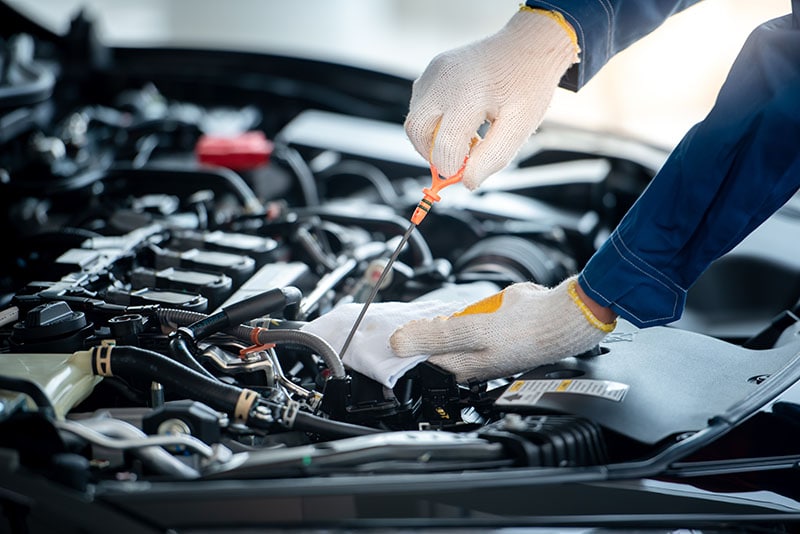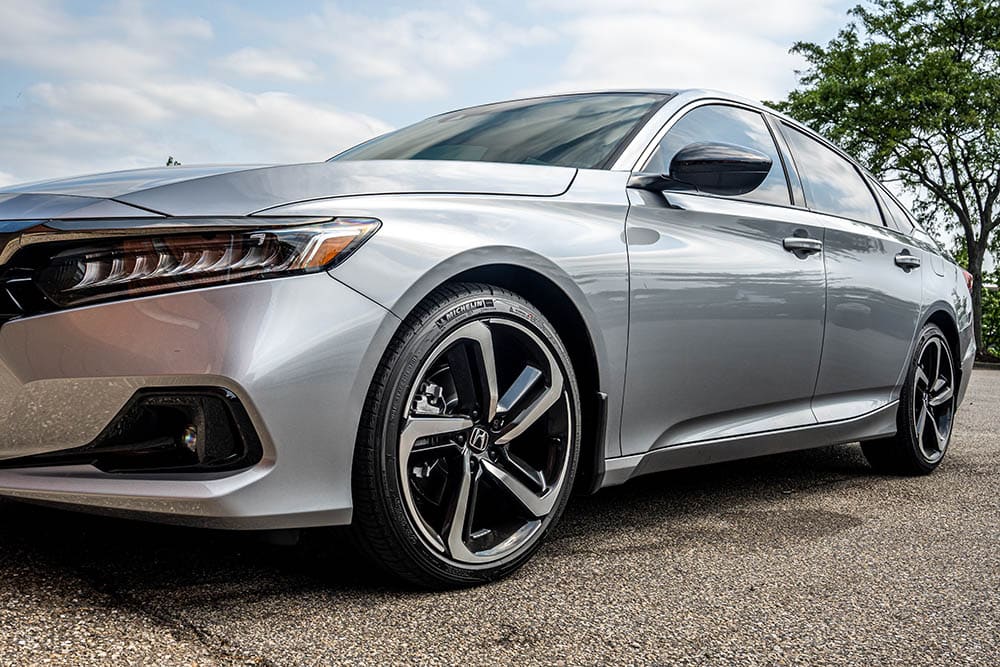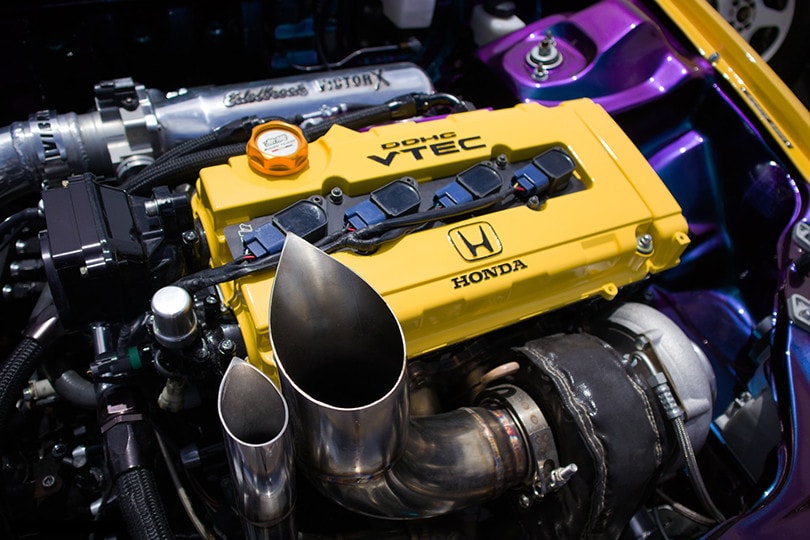What Is a VTEC Engine? How Does It Work?
-

- Last updated:

There are many different types of engines, each with its own specific set of benefits and drawbacks. One type of engine that has become increasingly popular in recent years is the VTEC engine.
VTEC stands for Variable Valve Timing and Lift Electronic Control. This technology was first introduced by Honda in 1989 on their DOHC (dual overhead cam) engines. The main benefit of a VTEC engine is that it can improve fuel economy and torque while still providing power when you need it.
The following guide explores VTEC engines in greater detail, including how they work and what benefits they offer.
How Does It Work?
A VTEC engine uses two sets of intake and exhaust valves. The first set is smaller and is used when the engine is operating at lower speeds. The second set is larger and is used when the engine is running at higher speeds. The switch between the two sets of valves is controlled by a device called a VTEC solenoid.
When the engine is operating at lower speeds, a smaller set of intake and exhaust valves are used. This allows for better fuel economy because there is less air and fuel going into the engine. The tradeoff is that the engine produces less power.
When the engine is running at higher speeds, a larger set of intake and exhaust valves are used. This lets more air and fuel into the engine, which results in more power. The tradeoff is that fuel economy suffers because more fuel is being used.
The VTEC system is able to switch between the two sets of valves automatically based on how the engine is being used. That means that the engine can be optimized for both power and fuel economy, depending on what the driver needs.

What Are the Different Types of VTEC Engines?
Honda’s VTEC system was first introduced in 1989 on the JDM (Japanese Domestic Market) Integra XSi. There are three different types of VTEC engines: SOHC (Single OverHead Camshaft), DOHC (Double OverHead Camshaft), and i-VTEC (intelligent VTEC).
SOHC VTEC Engines
SOHC VTEC engines are some of the most popular engines used in Honda vehicles. These engines are known for their high performance and fuel efficiency. Many Honda enthusiasts consider SOHC VTEC engines to be the best engines available.
SOHC VTEC stands for Single Overhead Camshaft with Variable Valve Timing and Lift Electronic Control. This technology was first introduced in the late 1980s and has been used in a variety of Honda engines since then.
These engines are designed to produce more power than traditional DOHC engines while still maintaining excellent fuel economy. These engines typically have four valves per cylinder, which allows for better airflow and more efficient combustion.
SOHC VTEC engines are also known for their high revving capabilities. Many Honda enthusiasts consider SOHC VTEC engines to be the best choice for high-performance applications.
If you are looking for a high-performance engine for your Honda, then a SOHC VTEC engine is an excellent option. These engines are reliable, fuel-efficient, and offer great performance.
DOHC VTEC Engines
DOHC VTEC engines are high-performance engines that use Variable Valve Timing and Lift Electronic Control (VTEC) to improve power output and fuel economy. DOHC VTEC engines were first introduced in the early 1990s and have since become popular in a wide range of vehicles.

These engines typically offer more power and better fuel economy than their non-VTEC counterparts. The addition of VTEC allows the engine to switch between two different camshaft profiles, depending on operating conditions. This allows the engine to run with lower emissions and improved fuel economy at lower speeds while still providing high power output when needed.
DOHC VTEC engines are available in a variety of displacements, from small four-cylinder engines to large V8s. Many DOHC VTEC engines are also turbocharged or supercharged, further increasing power output.
While DOHC VTEC engines offer many benefits, they can also be complex and expensive to maintain. As such, they are typically only found in higher-end vehicles.
i-VTEC Engines
The i-VTEC engine is a type of internal combustion engine that was developed by Honda. It is an evolution of the company’s VTEC system and combines Variable Valve Timing and Lift Electronic Control (VVL) with Variable Valve Timing and lift (VTEC). The result is an engine that offers both high power and fuel efficiency.
i-VTEC engines are available in a wide range of displacement sizes, from 1.0 L to 3.5 L. In addition to gasoline engines, i-VTEC technology is also used in Honda’s line of hybrid electric vehicles (HEVs).
The first i-VTEC engine was introduced in the 1998 Honda Accord. It was a 2.3 L V6 that produced 200 hp (149 kW). Since then, i-VTEC engines have been used in a variety of Honda and Acura vehicles.
Where Is It Used?
A VTEC engine is commonly found in Honda vehicles. However, other manufacturers have also started similar technology in their engines.

Advantages of VTEC Engines
As noted, VTEC engines have several advantages that make them appealing to drivers. These advantages include:
- Increased fuel efficiency due to reduced friction
- More power and torque
- Lower emissions
- Smoother, more responsive acceleration
Disadvantages of VTEC Engines
Conversely, there are also a few disadvantages that come along with VTEC engines, including:
- Increased cost
- Often require higher-quality fuel than other engine types
- VTEC engines may require more maintenance than other engine types
Overall, VTEC engines offer several advantages and disadvantages. It’s important to weigh all of these factors before deciding if a VTEC engine is right for you.
Frequently Asked Questions (FAQs)
How can I tell if my car has a VTEC engine?
If your car has a VTEC engine, it will typically have “VTEC” badges or stickers on the bodywork. You can also check the owner’s manual or ask a dealer or mechanic.
Do all Honda engines use VTEC?
No, not all Honda engines use VTEC. However, many of Honda’s performance models do use VTEC technology.

What other manufacturers use VTEC engines?
Only Honda uses VTEC engines.
I’ve heard of “fake” or “emulated” VTEC. What is this?
Some car makers use electronic controls to simulate the effects of VTEC without actually using VTEC hardware. This can be used to create the impression of increased performance without the actual benefits of VTEC.
Will a VTEC engine work with my aftermarket parts?
In most cases, yes. However, it’s always best to check with the manufacturer of your aftermarket parts to be sure.
Can I convert my non-VTEC engine to VTEC?
In some cases, it may be possible to convert a non-VTEC engine to VTEC. However, this is typically not recommended or necessary.

What is the difference between VTEC and VVT?
VTEC and VVT are two different technologies that can be used to improve performance. VTEC adjusts the timing and lift of the valves, while VVT adjusts the timing of the intake and exhaust camshafts.
Conclusion
As you can see, VTEC engines are quite a complex piece of machinery. But in a nutshell, they work by using two different sets of camshafts and valves to improve performance. During low-rpm operation, only one set of camshafts is used to reduce fuel consumption.
VTECs have long been known for their performance capabilities, but in recent years they have become more popular in smaller, fuel-efficient vehicles as well. So whether you’re looking for a high-performance engine or one that’s more fuel-efficient, a VTEC engine might be right for you.
Honda VTEC Engine Image Credit By: Tennen-Gas, Wikimedia Commons CC BY-SA 3.0)
Contents

